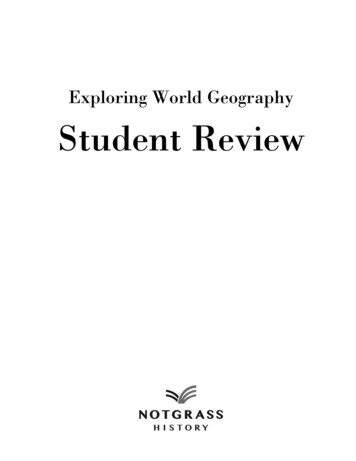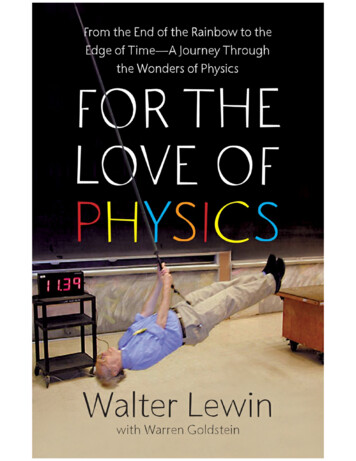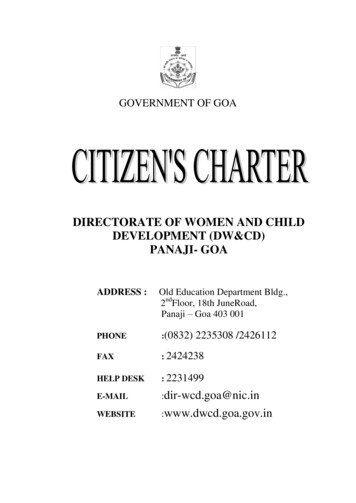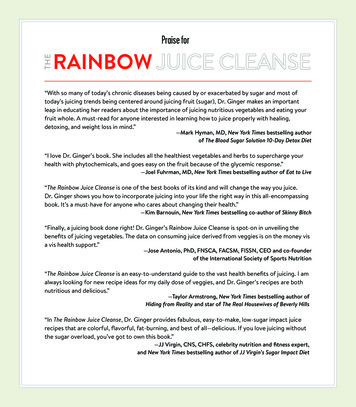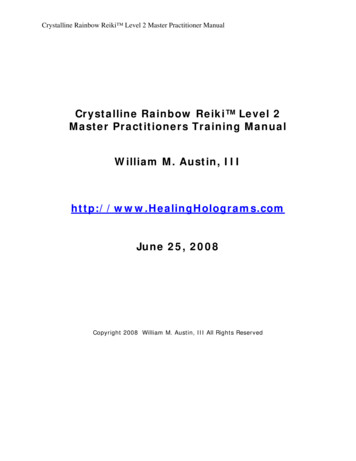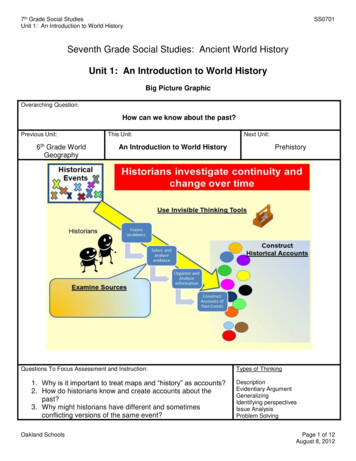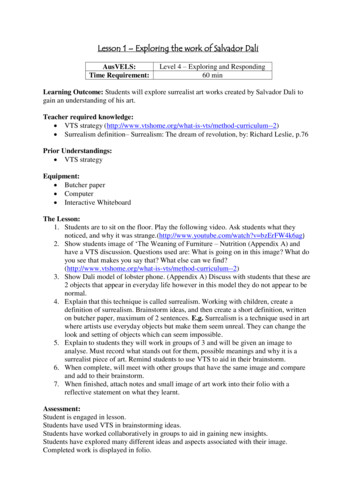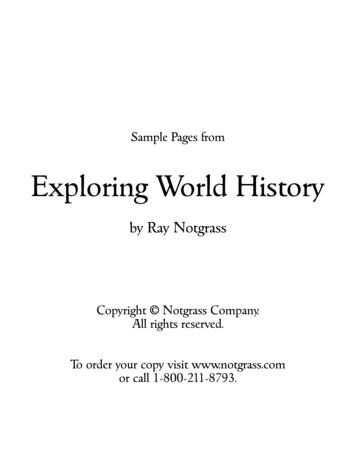
Transcription
Sample Pages fromExploring World Historyby Ray NotgrassCopyright Notgrass Company.All rights reserved.To order your copy visit www.notgrass.comor call 1-800-211-8793.
Table of Contents for Part 1Introduction.ixHow to Use This Curriculum.xiTips on Writing.xiiiLiterature List.xivUnit 1—Introduction to the World.1Lesson 1—It Begins With God.3Lesson 2—Understanding Our World.7Lesson 3—Your Place in the World.11Lesson 4—Religion in History.15Lesson 5—Bible Study: Eternity Before Creation.21Unit 2—The Beginning.25Lesson 6—Creation.27Lesson 7—Sin.32Lesson 8—Early People Groups.36Lesson 9—Questions from Genesis.40Lesson 10—Bible Study: The Existence of God.45Unit 3—Early Civilizations.49Lesson 11—Sumer.51Lesson 12—Egypt.56Lesson 13—Key Concepts: Science and Mathematics in Sumer and Egypt.61Lesson 14—Key Person: Hammurabi and His Code of Laws.65Lesson 15—Bible Study: From Eden to Iraq—The Land Between the Rivers.67Egyptian pyramidsv
viExploring World HistoryUnit 4—Abraham and His Descendants.71Lesson 16—Abraham, Isaac, and Jacob.73Lesson 17—Key Concept: The Faith of Abraham.79Lesson 18—Everyday Life of Nomads.83Lesson 19—Key Event: The Destruction of Sodom and Gomorrah.87Lesson 20—Bible Study: “God Meant It for Good”—The Life of Joseph.91Unit 5—God Chooses Israel.97Lesson 21—Israel Becomes a Nation.99Lesson 22—Key Event: The Exodus.103Lesson 23—Key Person: Moses.107Lesson 24—Everyday Life: The Story of Ruth.113Lesson 25—Bible Study: The Law.121Unit 6—Israel and Her Neighbors.127Lesson 26—Israel United and Divided.131Lesson 27—Nations of the Ancient Near East.137Lesson 28—Key Person: David.141Lesson 29—Daily Life in the Time of King Solomon.147Lesson 30—Bible Study: Amos, the Unlikely Prophet.153Unit 7—Persia.159Lesson 31—The Rise of a New Kingdom.161Lesson 32—Key Concept: Persian Religion.165Lesson 33—Key Person: Cyrus.169Lesson 34—Daily Life in Babylon During the Days of Daniel.172Lesson 35—Bible Study: “For Such a Time as This”—The Story of Esther.179Persian ruins
Table of ContentsviiUnit 8—Ancient Non‐Western Civilizations.189Lesson 36—Ancient India.191Lesson 37—Ancient China.198Lesson 38—Ancient Africa, America, and Europe.203Lesson 39—Government, Culture, and Science in Ancient China.209Lesson 40—Bible Study: God’s Love for the Nations—The Story of Jonah.214Unit 9—Greek Civilization.217Lesson 41—Survey of Greek History.219Lesson 42—Key Idea: Philosophy and the Pursuit of Knowledge.229Lesson 43—Key Person: Pericles.236Lesson 44—Everyday Life in Ancient Athens.238Lesson 45—Bible Study: God’s Wisdom vs. Man’s Wisdom.241Roman ruinsUnit 10—Roman Civilization.245Lesson 46—The Rise and Fall of Rome.247Lesson 47—Key Person: Augustus Caesar.254Lesson 48—Key Concept: Roman Law.259Lesson 49—Everyday Life in Rome.262Lesson 50—Bible Study: The Kingdom of God.267Unit 11—The Central Event in History: Jesus.271Lesson 51—Introduction to the Gospel of Luke.273Lesson 52—The Revolution Jesus Brought.281Lesson 53—Unlikely Heroes.288Lesson 54—Spiritual Topics in Luke.296Lesson 55—Bible Study: Jerusalem.303
viiiExploring World HistoryUnit 12—The Church Age.307Lesson 56—The Church Begins.309Lesson 57—Key Event: The Conversion of Cornelius.316Lesson 58—Key Person: Paul.321Lesson 59—Daily Life in the First Century.327Lesson 60—Bible Study: How to Study a New Testament Letter.341Unit 13—Changes in Rome, Changes in the Church.345Lesson 61—The Decline of Rome.347Lesson 62—The Changing Face of the Church.353Lesson 63—Developments in Church Practice.358Lesson 64—Key Person: Constantine.365Lesson 65—Bible Study: What Happened to the Church?.369Unit 14—The Early Middle Ages.373Lesson 66—Factors in the Middle Ages.375Lesson 67—Key Event: The Rise of Islam.383Lesson 68—Key Person: Alfred the Great.389Lesson 69—Everyday Life Among the Vikings.392Lesson 70—Bible Study: Methods and Motives in Evangelism.395Unit 15—The Late Middle Ages.399Lesson 71—A Changing World.401Lesson 72—Everyday Life in the Middle Ages.409Lesson 73—Key Event: The Crusades.419Lesson 74—Key Person: Thomas Aquinas.423Lesson 75—Bible Study: Obeying God, Obeying Men.427Medieval illustration
Table of Contents for Part 2Unit 16—The Renaissance.433Lesson 76—A Different Focus.435Lesson 77—Key Event: The Invention of Movable Printing.445Lesson 78—Key Person: Leonardo da Vinci.450Lesson 79—The History of Music.453Lesson 80—Bible Study: Worldliness vs. Godliness.465Unit 17—The Age of Reformation.469Lesson 81—Martin Luther and the Break with Rome.471Lesson 82—Key Person: John Calvin.479Lesson 83—Key Movement: The Anabaptists.483Lesson 84—History of the English Bible.487Lesson 85—Bible Study: Grace.493Unit 18—The Age of Exploration.497Lesson 86—Discovering New Worlds.499Lesson 87—Key Person: Christopher Columbus.507Lesson 88—Key Event: The English Defeat of the Spanish Armada.513Lesson 89—Homes and Household Furnishings in Everyday Life.517Lesson 90—Bible Study: Exploring the Promised Land.521Map featuring world explorersv
viExploring World HistoryUnit 19—The Scientific Revolution.525Lesson 91—A New View.527Lesson 92—Key Event: The Heresy Trial of Galileo Galilei.534Lesson 93—Key Person: Isaac Newton.541Lesson 94—Clothing Through the Centuries.545Lesson 95—Bible Study: The Inspiration and Authority of Scripture.551Unit 20—The Age of Revolution.555Lesson 96—Revolutions in England and America.557Lesson 97—Key Event: The French Revolution.565Lesson 98—Key Person: John Locke.574Lesson 99—Eating Through the Centuries.577Lesson 100—Bible Study: Freedom and Responsibility—A Study of Galatians.584Unit 21—The Making of Modern Europe.589Lesson 101—Key Person: Napoleon.591Lesson 102—Revolution, Reaction, and Reorganization.597Lesson 103—Key Event: Unification in Italy and Germany.606Lesson 104—A Short History of Art.614Lesson 105—Bible Study: Honesty.621Mine works in Cornwall, EnglandUnit 22—Britain: Industry and Empire.625Lesson 106—Britain in the Nineteenth Century.627Lesson 107—Key Issue: The Irish Question.638Lesson 108—Key Person: George Müller.643Lesson 109—The History of Transportation.649Lesson 110—Bible Study: Kindness.660
Table of ContentsviiUnit 23—A Revolution in Thought.663Lesson 111—Karl Marx.665Lesson 112—Charles Darwin.671Lesson 113—Sigmund Freud.678Lesson 114—The History of Education and John Dewey, A Revolutionary in Education.682Lesson 115—Bible Study: Higher Criticism.691Unit 24—The Making of Modern Africa.695Lesson 116—European Colonization.697Lesson 117—Key Country: Ethiopia.702Lesson 118—The Culture of the Masai: A Traditional African Tribe.706Lesson 119—Key Issue: South Africa.709Lesson 120—Bible Study: Africa in the Bible.714Unit 25—The Making of Modern Asia.717Lesson 121—China: From Dynasties to Communism.719Lesson 122—India: A Clash of Cultures.724Lesson 123—Other Nations in Asia.729Lesson 124—Christian Missionaries to Asia.735Lesson 125—Bible Study: Helping the Poor.739Road sign in southeast AsiaUnit 26—The Making of Modern Latin America.743Lesson 126—Many Countries, One Goal.745Lesson 127—Mexico’s Story.752Lesson 128—Key Person: Simón Bolívar.757Lesson 129—The Indigenous Peoples of Latin America.761Lesson 130—Bible Study: Justice.767
viiiExploring World HistoryUnit 27—The World at War.771Lesson 131—Twice in Twenty‐Five Years.773Lesson 132—Key Event: American Involvement in World War II.787Lesson 133—Key Person: Winston Churchill.791Lesson 134—The Cultural History of Japan.798Lesson 135—Bible Study: Peace.805Disabled World War II VeteranUnit 28—The Cold War.809Lesson 136—Freedom vs. Communism.811Lesson 137—Key Event: The Space Race.817Lesson 138—Key Person: Ronald Reagan.822Lesson 139—Everyday Life in the United States and the U.S.S.R. During the 1950s and 1960s.826Lesson 140—Bible Study: Fighting the Good Fight (1 Timothy).836Unit 29—Into the Twenty‐First Century.841Lesson 141—A Reign of Terror.843Lesson 142—Advances in Technology.849Lesson 143—Key Persons: The Homeschooling Family.854Lesson 144—The History of Keeping Time.859Lesson 145—Bible Study: The Value of Life.865Unit 30—Looking Backward, Looking Forward.869Lesson 146—Lessons from World History.871Lesson 147—A Sense of History.875Lesson 148—Living in the Modern World.880Lesson 149—Becoming a World Christian.886Lesson 150—Bible Study: Eternity After This World.890Index.895
IntroductionYou are about to embark upon an exciting journey. You will go to fascinating placesand meet some amazing people. You will hear stories of faith, courage, endurance, andvictory over seemingly impossible odds. You will experience wonderful stories and hearchallenging ideas that could truly change your life.You are about to embark on a study of the story of mankind.We hope to accomplish these goals with this curriculum:1. We want to honor God. He made everything, and He has been extremelygood to us. We are thankful that we get to encourage families in their greatquest to rear children to the glory of God. To Him be all praise.2. We want to help you understand world history, especially how God hasbeen at work in it. The story of our world is the story of what God has doneand what people made in His image have done. We find it a fascinatingstory, and we hope you approach it with anticipation, eager to turn everypage and to learn something new.3. We want to open your heart to some good books and to help you enjoyreading. The books we have chosen are uplifting and worth reading. Wehope your eyes will flash and your pulse pound as the words and thoughtsleave the page and go into your life.4. We want to help you understand the Bible better. We have placed a greatemphasis on the story of the Bible, from Old Testament times through theperiod of the early church. The Bible studies included with the units areintended to help you see how relevant the Bible is to the study of history andto our lives today. The more you get into the Word, the more God willchange your life for the better.5. It is our prayer that you will be a better person, a better Christian, for havinginvested the time in this material. You will only get out of it what you putinto it, so give it your best and you will receive great blessings from it.How We Present ScriptureThe most important material in this curriculum are the studies from God’s Word. Webelieve in the inspiration and authority of the Bible. Our desire is to present the Bible in all ofits truth, wisdom, and power. We have no denominational bias or agenda that lies behindwhat we present. We strive in all we do simply to be Christians. We are on a relentless questix
xExploring World Historyto understand the truth that God has presented in His word and in His creation. We believethat eternal truth does exist, but we do not claim to know it all. If you read a statement orthought that differs from what you believe, we humbly encourage you to study the Scriptureswith us to determine the truth. If you believe that we have written something in error, pleasee‐mail me so that we can learn together the truth that will set us free.This has been a family project for us. I wrote most of the lessons and guided the overallproject. My wife, Charlene, and our older son, John, have contributed several lessons each. Iwant to give a special thanks to John for his diligent search for pictures to include in the text.His hard work in combing through many different sources has made the curriculum moreeffective and enjoyable. Our oldest daughter, Bethany, wrote most of the review questions onthe lessons for the Quiz and Exam Book. Our second oldest daughter, Mary Evelyn (Mev),wrote the Grammar Points. The five of us have all been involved in molding the curriculum.Our three youngest children, Liz, Hannah, and Daniel, are still homeschooling and havecheered us on to complete the project.As we have worked on this curriculum, time and again we have seen God’s wisdom,power, and love displayed in the story of mankind. We are convinced anew that Jesus reallyis the answer for every individual and for human society. We see this curriculum as anopportunity for us to make friends with other homeschooling families and to exploretogether the wonderful story of world history. May God bless you.Ray NotgrassGainesboro, Tennesseeray@notgrass.com
How to Use This CurriculumWe have tried to make this curriculum student‐friendly and parent‐friendly. A studentcan complete it with as much or as little involvement by parents as the parents choose to give.The curriculum provides credit in three high school subjects: world history, English(world literature and composition), and Bible. Each of the 30 units has five lessons andrepresents a week’s work. The unit introduction gives a brief overview of that unit, outlinesthe lessons, tells you the books you will need for that unit, gives you the choices for yourwriting assignment, and introduces you to the book you will be reading.Compressing the history of the world into one year of study was a challenge, so wehave provided historical overviews along with focused lessons on key events, concepts, andpeople. We have also included surveys of daily life and culture. The Bible study lessons allowyou to concentrate one day a week on the spiritual implications of what you have beenstudying.For each day, you will read the lesson, work on your writing assignment, andcomplete all the reading assignments at a pace that will enable you to finish them in thespecified time. Reading assignments include several books of the Bible, thirteen full‐lengthbooks both old and new, and original sources from In Their Words.Most lessons have a Bible Study Question. You can handle the question however youwish. The student can simply think about it, or discuss it with his or her family, or develop acomplete written answer. Most lessons also have a Grammar Point to help you write morecorrectly and effectively. The Grammar Point does not have an assignment. We simplyencourage you to put it into practice in your writing.If you are using the Quiz and Exam Book daily, you will need to answer the questionsfor each lesson. The Quiz and Exam Book also has a quiz on each unit and four exams over thecourse of the study. The history credit involves reading the lessons and the original documents(and answering the questions in the Quiz and Exam Book if that is theapproach you are taking). The English credit involves studying the grammar points, completing thewriting assignments, and reading the assigned books, as well as the poems,hymns, and short stories in In Their Words. Let your enjoyment of the booksbe a higher priority than worrying over details of plot, theme, vocabulary,and so forth. Give yourself time to do well on the writing. Make each week’swriting assignment an opportunity and not a chore.xi
xiiExploring World History The Bible credit involves answering the daily Bible Study Question (in yourmind, verbally, or on paper) and reading the Bible study lesson for eachunit. A considerable portion of the first third of the curriculum is Biblehistory. These lessons are also included in the Bible credit.Two to three hours per day should be enough time to complete all of the work.Reading the books might require a bit more time if you read relatively slowly, and somecomposition assignments might require more time.The Nation Project (Optional)The Nation Project is a series of research and writing assignments that will help yourstudy of world history take on even more meaning by digging deeply into the story of onecountry. It allows you to focus on one country (other than the United States) and to use it asthe basis for your writing assignments.Several factors might influence your choice of what country to study. One or both ofyour parents might have extended
2. We want to help you understand world history, especially how God has been at work in it. The story of our world is the story of what God has done and what peo


